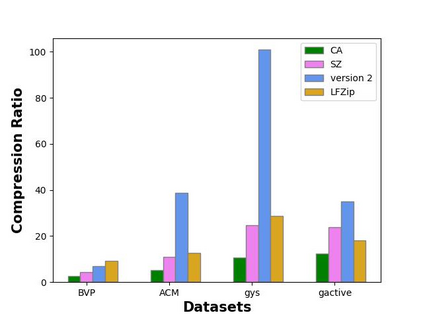The last two decades have seen tremendous growth in data collections because of the realization of recent technologies, including the internet of things (IoT), E-Health, industrial IoT 4.0, autonomous vehicles, etc. The challenge of data transmission and storage can be handled by utilizing state-of-the-art data compression methods. Recent data compression methods are proposed using deep learning methods, which perform better than conventional methods. However, these methods require a lot of data and resources for training. Furthermore, it is difficult to materialize these deep learning-based solutions on IoT devices due to the resource-constrained nature of IoT devices. In this paper, we propose lightweight data compression methods based on data statistics and deviation. The proposed method performs better than the deep learning method in terms of compression ratio (CR). We simulate and compare the proposed data compression methods for various time series signals, e.g., accelerometer, gas sensor, gyroscope, electrical power consumption, etc. In particular, it is observed that the proposed method achieves 250.8\%, 94.3\%, and 205\% higher CR than the deep learning method for the GYS, Gactive, and ACM datasets, respectively. The code and data are available at https://github.com/vidhi0206/data-compression .
翻译:过去二十年中,由于实现了最新技术,包括物的互联网(IoT)、电子保健、工业IoT4.0自动工具等,数据收集有了巨大的增长。数据传输和储存的挑战可以通过使用最先进的数据压缩方法来解决。最近提出的数据压缩方法是采用比常规方法更好的深层次学习方法,但是,这些方法需要大量的数据和资源用于培训。此外,由于IoT设备的资源限制性质,难以实现这些基于深入学习的IoT设备解决方案。在本文件中,我们提出了基于数据统计和偏差的轻量数据压缩方法。提议的方法在压缩比率方面比深层次学习方法要好。我们模拟和比较了各种时间序列信号的拟议数据压缩方法,例如:加速计、气体传感器、陀螺仪、陀螺仪、电流、电能消耗等。特别是,观察到拟议的方法达到了250.8 ⁇ 、94.3 ⁇ 和205°CR比GYS、GUV/MMM和AS的深层学习方法分别是可用的数据。



